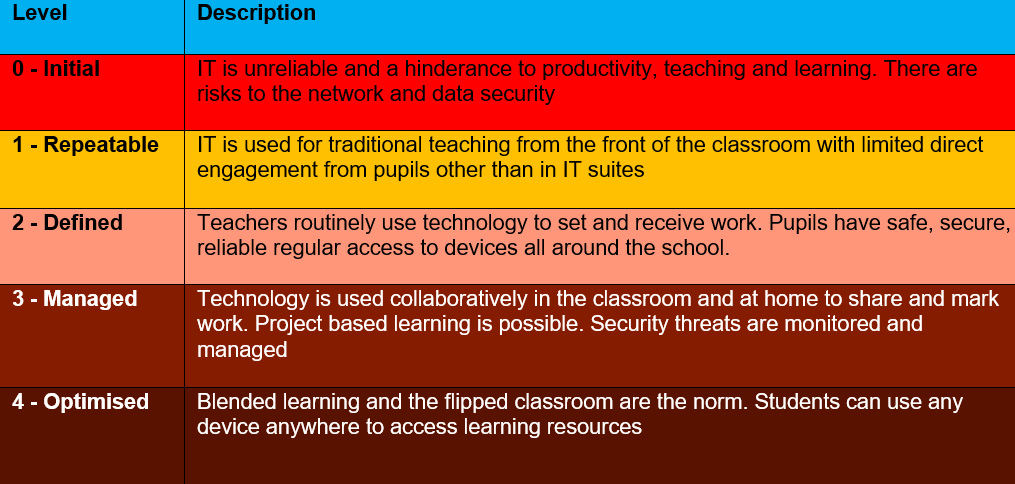
The latest research indicates that the vast majority of employers (86%) now require candidates to be equipped with digital skills. Now we must embed digital progression in schools and think strategically about where our schools are now and where they need to be.
Schools must embrace digital transformation and continue the incredible impetus created in response to the challenges we faced with remote teaching and learning during the pandemic. Devising an IT strategy lets schools take stock of their progress. It involves a review of the current ICT strengths and challenges and identifies the needs of different stakeholders. This leads to efficient procurement of the technology followed by an evaluation of success and challenges
We need to meet differing groups’ needs and encourage development and innovation:
- Managers and support staff need access to lightweight smaller laptops for when it’s necessary for them to be mobile and work remotely, as well as access to a larger screen for office based tasks.
- Single sign-on access to key software, simplified electronic procurement processes and centralised information will allow them to work more effectively and efficiently
- Teachers need laptops and access to online resources to plan, as well as consistent and reliable classroom set ups and standardised display methods to make teaching in different rooms or venues across a MAT simpler
- Digital teaching and learning platforms allow students to upload finished tasks and teachers to mark and annotate electronically
- With a standardised school MIS, teachers can enter, access and analyse data and create accurate reports
- A centralised system like this can also improve pastoral care, providing a simple way to log, record and review incidents
- Students need a safe, secure digital environment to engage in learning and build digital skills and understanding. It should also provide opportunities for creativity and innovation and illustrate the vast potential of technology
- School administrators, require secure, reliable equipment to automate repetitious tasks, increase productivity, and improve communication with parents
IT review – where you are now and where you want to be
Before you begin to decide on procurement, you need to assess your school’s level of ‘IT maturity’. Evaluation rubrics such as the one below are a useful tool to ensure that everyone involved in the review is using the same criteria.

It is always important to engage with stakeholders when you are making decisions that impact their daily lives. Create an ‘inclusive’ steering group and seek out critical friends. Keep all stakeholders up to date with regular updates via email or newsletters. Encourage open and direct debate and discussion, and address any stakeholder concerns. Make sure that staff who have contributed are recognised with a shout out. Make sure you do not over commit to single demands from a more vocal group.
Once the new ICT has been in use for a while and has been thoroughly tested, it’s time to review the school’s IT maturity again and compare it to previous findings. Seek out staff feedback, study the financial implications and reflect on the successes and the challenges. Then begin to plan for the next IT strategy review and improvement process.